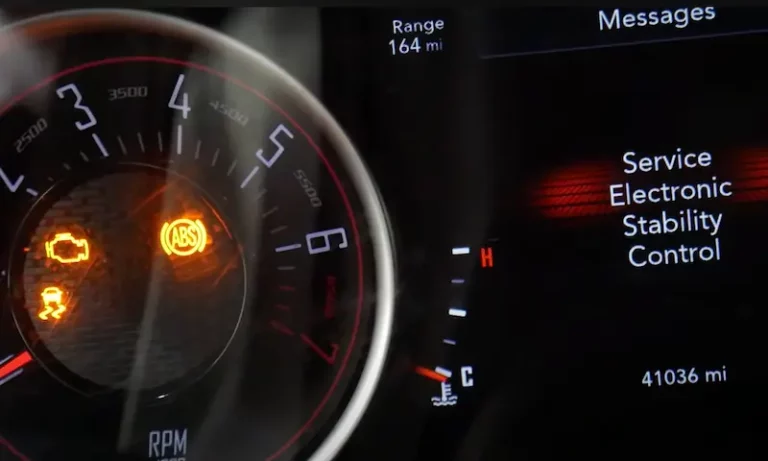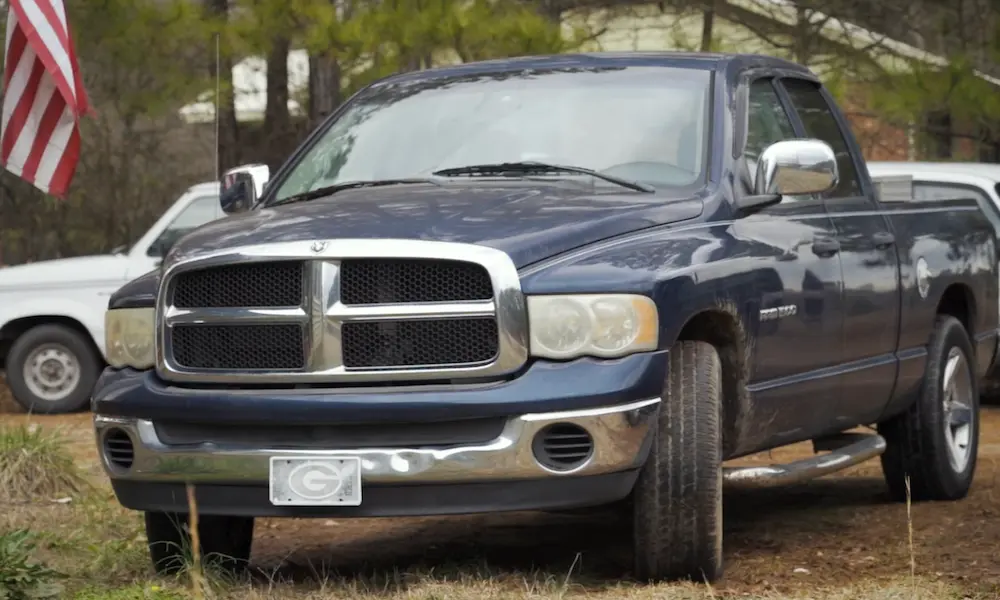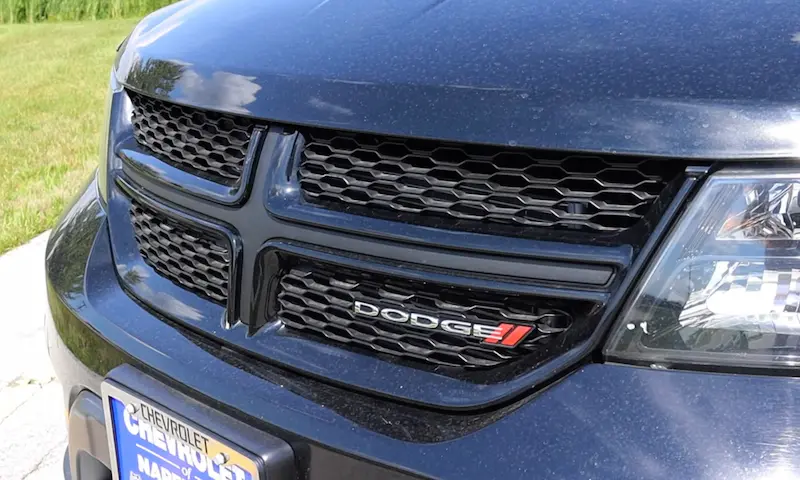A Dodge electronic stability control is another safety feature that protects your vehicle from skidding or losing control while driving on low-traction roads.
The electronic stability control uses various components like sensors and the braking system to ensure the safety system is executed when needed.
Sometimes the system encounters issues with these components, affecting how it executes its function. When this happens, the vehicle’s computer system informs the driver the ESC system is not working fine through a warning message like “service electronic stability control.”
What is Dodge Charger Service Electronic Stability Control?
The Dodge Service Electronic Stability Control is an error message that comes up when there is an issue with the electronic stability control (ESC) system. A malfunction in the system or any damaged sensor will cause an error message.
Electronic stability control uses intelligent sensors that monitor the movement and direction of the steering. The sensor collects data on the car’s wheel speeds and lateral acceleration. Once the data is collected, it transfers to the system, where it will be compared with the intended direction to the actual path.
Furthermore, the system will get activated once the sensor detects a loss in traction, which can result from understeer or oversteer and skidding. Once the system detects that the vehicle is losing traction, it releases braking force at the front part of the wheel. When this happens, a torque is produced, which counters oversteering.
The ESC makes use of the following sensor.
1. Steering angle sensor
The sensor monitors and measures the direction intended to drive the car.
2. Wheel speed sensors
The wheel speed sensor feeds the ECM with data on the vehicle’s speed, and then the ECM transmits the signal to the. The wheel sensor is located on one of the wheels, measuring how fast the wheel moves.
3. Lateral acceleration sensor
The lateral acceleration sensor tells the ESC sensor how fast the car accelerates and slows down when cornering. The sensor measures the centrifugal force whenever the vehicle turns or drives through a corner.
4. Yaw rate sensor
The yaw rate sensor feeds the ESC system how fast the vehicle tilts or rotates around a vertical axis.
If any of the sensors mentioned is damaged, it could deter the proper functioning of the ESC system. Also, a warning message will come up.
Causes of Dodge Charger Service Electronic Stability Control
Below are common causes of service electronic stability control.
1. Faulty wheel speed sensor
The wheel speed sensor, also known as the ABS sensor, is one of the primary sensors used by the ESC system. When the sensor is damaged, the system will not know how fast the vehicle moves, which is crucial to executing stability control.
Once the sensor is damaged, the ESC will automatically disable or malfunction. It will cause the “service electronic stability control” to come up.
2. Wiring issue
As its name implies, the ESC system is an electric component of the vehicle. It relies on the wiring connection to be able to receive current flow. Also, the wires promote communication between the ESC system and other important components.
When the wires are corroded or damaged in any way, the ESC will not receive adequate current flow, causing the system to be inactive.
Also, communication between the ESC and ECM or sensors will be cut off if the wires are damaged.
3. Battery issues
The ESC relies on the electric current from the battery, which it uses to stay functioning. When the battery is bad, the current sent to the electrical component will be inadequate to make them run properly.
In a situation like this, the ESC will remain inactive or malfunction until it can get sufficient current flow.
4. Damaged fuse
The fuse serves as a protection for the circuit of electrical components like the ESC. When there is a surge in current flow, the fuse takes all the damages and immediately disconnects the ESC from receiving current flow.
Once the fuse is blown, the system will not receive current flow. It will also be inactive and trigger the “service electronic stability control.”
5. Other damaged sensors
The ESC system does not only make use of the wheel speed sensor. Other sensors provide the necessary readings for the ESC system to function properly. Some of these sensors include the Yaw rate sensor, steering angle sensor, and lateral accelerator sensor.
If any of the sensors get damaged, the ESC system’s functions will be affected. It will also trigger warning lights and messages.
How to solve Dodge Charger Service Electronic Stability Control
There are many ways to solve a “service electronic stability control” error message. It is because many factors could cause the message to come up.
To choose the right fix for the issue, you need to have a proper diagnosis to know the cause of the warning message.
Below are ways to fix a “service electronic stability control” issue.
1. Replace the damaged wheel speed sensor
Run a test on the wheel sensor using an OBD-2 scan tool. The tool will give the status of the wheel sensor. If it works, it will be available; if not available.
If the test shows something is wrong with the sensor, locate it. The wheel speed sensor is found in each wheel hub on a vehicle, close to the brake caliper.
Once you can locate the sensor, check its housing for damages. Also, observe its wiring. If the sensor is damaged, have it replaced with the same type of sensor as the damaged one.
2. Fix the wiring issue
Use the owner’s manual to get the exact wires related to the ESC systems and their components. Have the wires inspected properly? Have the wiring harness changed immediately if any damages are spotted that could significantly affect the ESC system?
3. Check and fix the battery issue
Another cause of the warning message is a faulty battery, which hinders proper current flow. Check the terminal of the battery for corrosion or obvious. If it is corroded or dirty, have it cleaned? You can use baking soda and water to clean the terminal with a rag.
The battery needs a replacement if it is damaged and cannot retain a charge.
4. Replace the damaged fuse
Use the owner’s manual to locate the exact fuse box used by the ESC system or other components. Examine the fuse for any sign of burning; if the fuse is burnt, have it replaced with the exact type of fuse as the old one.
5. Replaced other damaged sensors
There are other sensors the ESC system uses: the Yaw rate sensor, steering angle sensor, and lateral accelerator sensor. You could also use the OBD-II scanner to test the sensor. If any are damaged, have them examined and replaced.
Final Thoughts
Regarding sensor problems, other factors could make the sensor not function as it should. Factors like dirt and wiring issues can hinder the sensor from functioning. It is not always that the OBD-II scanner detects something wrong with the sensor that it has to be changed. Sometimes it has to be cleaned, or the wiring changed.















